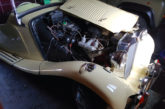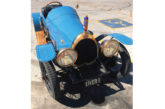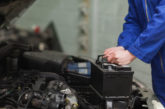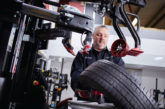
Maverick Diagnostics’ Dave Jones gives readers of PMM a comprehensive overview of Pass-Thru diagnostics.
Firstly, what is Pass-Thru? Put simply, a Pass-Thru device connects a computer to a vehicle’s engine control unit (ECU) via the OBD port for reprogramming.
Traditionally, updating ECU software was reserved for main dealer workshops due to the high cost and complexity of the necessary equipment. However, the 2004 introduction of the SAE J2534 protocol, known as Pass- Thru, revolutionised the process; it enabled independent technicians to update software, install improvements, and replace components.
The European Union adopted the J2534 Pass-Thru protocol to comply with the Euro V/VI regulation. The SAE J2534 protocol is split into two sub-protocols, and the vehicle manufacturer decides which protocol is applied to their vehicles:
SAE J2534-1: Defines the characteristics of a device that allows the repair of components related to anti-pollution systems.
SAE J2534-2: Defines the characteristics of a device that allows the repair of all vehicle systems.
Requirements for the application of the Pass- Thru can vary according to the manufacturer, but in general, for correct operation, any technician who wishes to connect a vehicle with the official server of the brand must have the following:
- A modern computer with Windows 10, substantial hard disk space (5 to 500 GB) and basic software like internet browsers and Adobe products.
- LAN Connector.
- Minimum of one USB 2.0 port
- It is highly recommended to disable any antivirus software installed on the computer and disable all battery-saving functions, hibernation, etc. In turn, both the computer and the communication head (VCI) must have their own power supply.
- VCI (vehicle communication interface) – diagnostic head compatible with the SAE J2534 standard (Pass-Thru). Not all tools that list J2534 have been tested and approved, and some tools are listed as compliant or ready. Don’t forget J2534-1 and J2534-2.
- A high-speed internet connection, preferably cable-based, for stability. The programming process of a whole vehicle can take more than three hours.
- An external power supply/stabiliser. A stable battery voltage is vital without current peaks during diagnosis; otherwise, the process can be interrupted, and irreversible damage to the control units may occur. New JLR vehicles require a power supply capable of providing 120 amps in any condition. Please also note that some programs have a maximum and minimum voltage limit.
- Programs for each manufacturer. Pass- Thru is a process that connects the vehicle directly with the server of a specific brand, regardless of the multi-brand device’s diagnosis program (the interface supplied with the multi-brand diagnostic equipment only performs the “bridge” function). So, the user must have previously downloaded an application provided by the manufacturer on which you want to work (for some brands, the diagnosis is 100 per cent online). This process involves downloading a file of several GB (between 5 and 60 GB), registering an account, understanding the program’s operation and paying for the time of use (you can pay by the day, week, month or year). For the use of diagnosis programs of some manufacturers, it is necessary to have an electronic security key (usually a USB stick) which is obtained during the registration period, which can take several months.
Advantages and challenges
Pass-Thru offers several benefits:
- Access to extensive vehicle information using the chassis number.
- 24/7 availability of up-to-date information.
- Time and cost savings due to a single VCI unit’s compatibility with multiple vehicle brands.
However, there are also challenges:
- A robust, preferably wired, internet connection is necessary to prevent prolonged diagnostics and potential control unit damage.
- Navigational difficulties due to varying terminologies across brands.
- There is a need for technicians to familiarise themselves with each brand’s program structure.
- Limited access to information for models predating Euro V regulations.
- Some manufacturers set registration and certification requirements.
- Time-consuming and complex installation and update processes for manufacturer programs.
- Costs associated with program licenses differ significantly based on the manufacturer and required information level.









